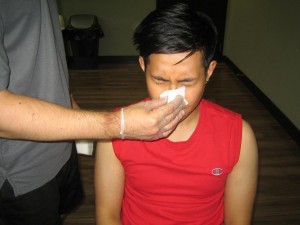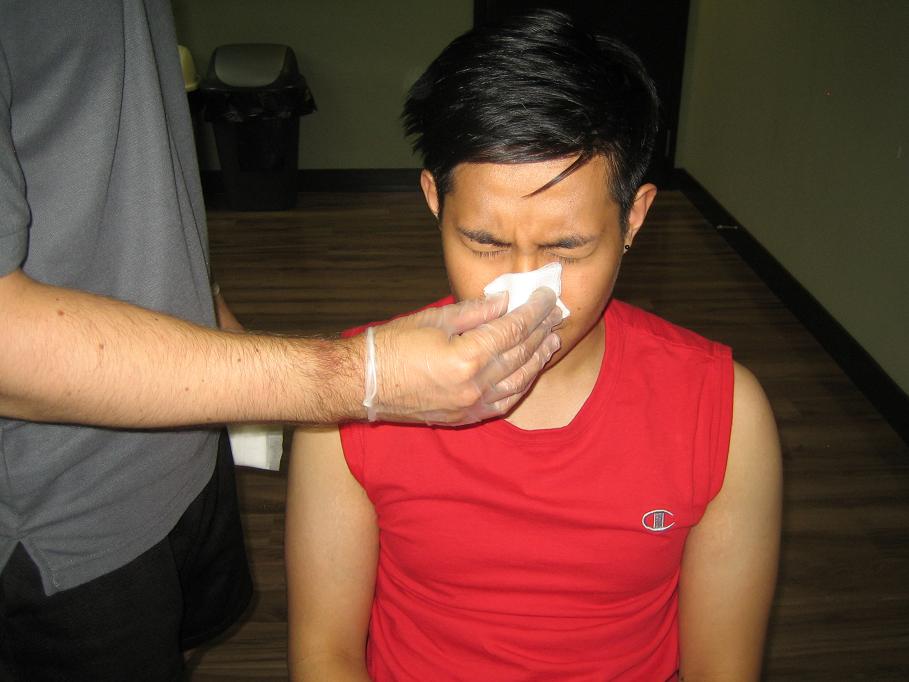https://www.youtube.com/watch?v=oExbzAJP7t4
Getting an injury can result in cuts and wounds, which in turn results in bleeding. In most cases, minor bleeding wounds are manageable and not treated as a medical emergency. However, for some people, bleeding, no matter how minor, can be a serious emergency, especially among persons with an abnormal bleeding problem called hemophilia. This is a genetic condition where bleeding is abnormal and often will not stop. Hemophilia becomes a medical emergency in cases of injuries where bleeding won’t stop in a normal time frame.
The material posted on this page on managing minor, major and serious wounds is for learning purposes only. To learn to recognize and treat serious injuries, including deadly bleeding, sign up for first aid training near you with one of our providers.
Types of Hemophilia Disease
There are two types of hemophilia. The two types are referred to as Type A and Type B, also known as classic hemophilia and Christmas hemophilia, respectively. About 80% of hemophilia cases involve Type A and the remaining 20% of the affected population of the disease have Type B. The main pathology in Type A hemophilia is the lack of the plasma protein VIII, which is an important factor for blood clotting. Individuals with the plasma protein VIII deficiency will manifest moderate to severe symptoms. On the other hand, Type B hemophilia involves the deficiency of the plasma protein factor IX that also helps blood to clot and the symptoms may be mild to severe.
Recognizing the Symptoms of Hemophilia
Spontaneous bleeding is the classic symptom of the disease, but other symptoms also occur aside from the abnormal bleeding. A hemophiliac (a person with hemophilia) usually shows unexplained large or deep bruises on the skin, joint pain caused by internal bleeding, and a blood in the urine or stool. Some people will also have prolonged bleeding after a tooth extraction or minor wounds. It is also common to feel tightness around the joint area and nose bleeds are very common.
Hemophilia becomes an emergency condition when the following symptoms appear:

- Severe body pain and headache
- Sudden swelling in large joints, such as the shoulders, hips, and knees.
- Severe, non-stop bleeding after an injury.
- Repeated vomiting
- Double vision
- Neck pain
In serious instances, the disease can also lead to the following complications:
- Infection
- Internal bleeding
- Damaged joint and joint deformity
First Aid Management for Abnormal Bleeding
If you are coming to an aid to a person who is severely or abnormally bleeding, you can do the following steps to provide first aid treatment:
- Elevate the part where the abnormal or severe bleeding is happening
- Lay the person down on a flat surface.
- Try cleaning the wound of any debris, but avoid removing the ones that may have severely damaged the skin and caused the bleeding. Doing so may cause more serious bleeding in the injured area.
- Apply pressure over the wound to prevent blood loss using a clean cloth or gauze from a first aid kit. Keep the pressure on the wound until you reach the hospital.
- Cover the person with a blanket to prevent shock and chills.
Reference:
Medicine.Net. Hemophilia. Retrieved on June 12, 2014 from http://www.medicinenet.com/hemophilia/article.htm

